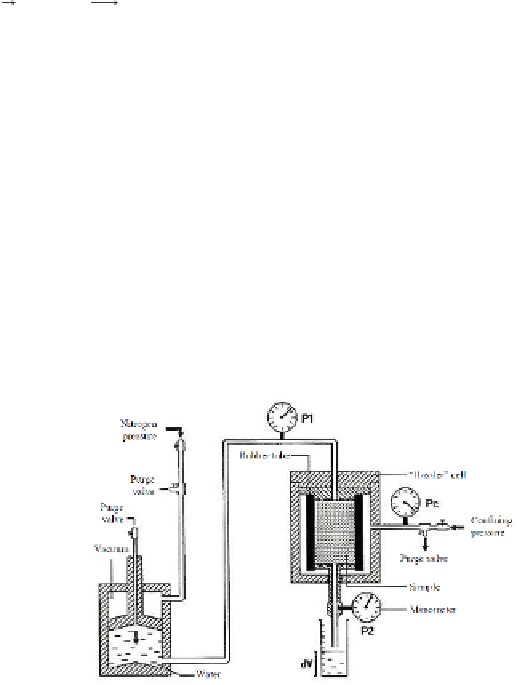Environmental Engineering Reference
In-Depth Information
From [9.18], and taking the dimension of the other variables and parameters into
account, it is easy to see that the permeability
k
has the dimension of a surface and is
thus expressed in square meters. Permeability values are commonly several orders
of magnitude lower than 1 m
2
, and therefore the “Darcy” unit has been introduced to
measure this parameter, with 1 Darcy = 10
-12
m
2
. Depending on stone type, the
permeability can range from 10
-10
Darcy for stones extracted from crystalline and
metamorphic rocks up to 1 Darcy, or even more, for those extracted from
sedimentary rocks [GUE 92, SCH 96].
Permeability is again an intrinsic property of stone. It is correlated with the
porous structure for water transfer and thus to the porosity [SCH 96]. At the
microscopic scale, individual pore section determines the local permeability. For a
single pore of radius
r
, Poiseuille's law gives:
4
π
8
r
Q
=
−
∇
P
[9.19]
η
for the laminar flow
Q
inside this pore. It is remarkable to observe that equations
[9.18] and [9.19] have the same mathematical form and the pore's individual
permeability is proportional to r
2
/8. Averaging this individual behavior at the scale
of the stone sample, taking into account the true porous structure (pore sizes,
distribution and their connectivity) determines the overall macroscopic permeability,
sometimes called
apparent
or
effective
permeability.
Numerous models have been proposed to estimate stone permeability [GRO 91,
GUE 92, HAM 94]. Nevertheless, since this parameter is extremely dependent on
stone porous structure and can vary over a huge range, as we have just seen, it is
better to take measurements with devices such as those presented in Figures 9.8 and
9.9.
Figure 9.8.
Schematic of a device for measuring permeability
by water percolation [DES 95]

